Great China, the choice of the capital
- HENAN MUSEUM
- Time:2020-12-17 14:58
Exhibition Venue: Main Exhibition Hall 1, Henan Museum, room 10
Exhibition Time: Permanent
Exhibition Organizer: Henan Museum

The exhibition features the history of the establishment of the Chinese capital in Central Plain, the history of the development of Central Plain civilization, the background of world civilization, the advantages of cultural relics in the Henan region, and the highlights of the ancient development of Central Plain, to show the development of the Chinese civilization, to reproduce the long and Glorious Central Plain Culture, as well as the influence and radiation of Central Plain culture. At the same time, from the perspective of globalization, the similarities and differences between the cultures of Central Plain and other regions will be revealed, and the dialogue between the civilizations of the Yellow River, the sea and the grassland will be launched. The basic exhibition is located on the first, second and third floors of the main exhibition hall. It is divided into 10 exhibition halls, which are composed of seven parts: Neolithic Age, Xia and Shang dynasties, Western Zhou, Eastern Zhou Dynasty, Qin, Han, Wei, Jin, southern and northern dynasties, Sui, Tang, song, Jin, Yuan, around the various historical periods, the culture of the capital city of Central Plain and the human life in the capital city. The capital construction in ancient China was from "selecting the capital" to "selecting the Palace" , and then the traditional "seeking the middle" idea of "selecting the palace" .
The earliest capital of Chinese civilization was in Henan.
The earliest "China" was in Henan.
Prologue Hall
Henan is located in the hinterland of Central Plain, and the geographical advantages of the four sides entering Gongdao and Lijun are in line with the ancient idea of "choosing the capital of China and building it" . In history, more than 20 dynasties have built their capitals here, from the earliest Erlitou capital city of Xia to the capital of Shangqiu in the late Jin Dynasty, it established Henan's special status as a political, economic and cultural center in Chinese history for more than 3000 years. If we go back even further, to the dense Upper Paleolithic of ancient human activity found along the Mount Song Front, to the evolution of north-south settlements throughout the Neolithic period in Mount Song to the early nations, mount Song was at the heart of the country.
The first exhibition hall, towards the Neolithic Era (10000 ~ 4000 years ago)
From the period of the Peiligang culture and Yangshao culture to the Longshan Culture in the central plains, the ancestors experienced the origin of agriculture, the establishment of agriculture-based, the independence of handicraft industry and the differentiation of specialized handicraft workshops, this led to a gradual shift from an Egalitarian Society to a stratified society, which was the social basis for the emergence of the first civilizations. The multi-level settlement structure surrounding the central settlement, the large settlement with the character of capital city, the appearance of the big city, and the formation of the city-state is the historical process of the origin of the civilization in Central Plain. In this process, the structure of the early Chinese cultural circle formed in the Miaodigou period of Yangshao culture established the overall appearance of the external radiation of the Central Plain dynasty in the pre-qin period. More than 5,000 years ago, the duyi nature of the Shuanghuaishu site, known as the "Heluo ancient country, " confirmed the history of Chinese civilization for five thousand years.
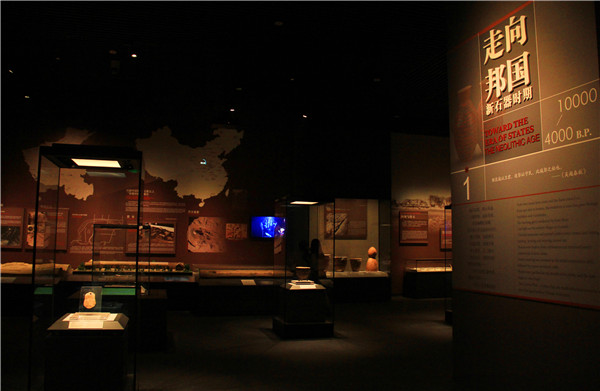
The first gallery scene

Jiahu gudi

Two-pot painted pottery
Hall 2, Central Plain, florida-xia and Shang Dynasties (21st century BC ~ 1040S BC AD)
Typical sites of the late Longshan culture, such as Wangchenggang in Dengfeng, Huadian in Yuzhou, and Huadizui in Gongyi, on the front line of the Central Plains of Mount Song, not only outline the activities of the early Xia people, but also the initial form of the evolution of the early state. The capitals of the Xia Dynasty represented by the Erlitou, the Shang Dynasty represented by the Zhengzhou Shang city and the Yin Ruins of Anyang, reflect the political, economic and material culture of the Xia and Shang capitals, and the powerful cultural radiation of Central Plain at its core. Many ideas and regulations in the Xia and Shang dynasties had a profound influence on the later generations, such as the axis of the palace city and the gate of the capital city were directly inherited by later generations. The Yin Ruins of Anyang, with the earliest mature inscriptions on oracle bones, exquisite bronze casting and exquisite jade-making techniques, brought the culture of the bronze age to a peak and revealed a mysterious dynasty that had been long gone.
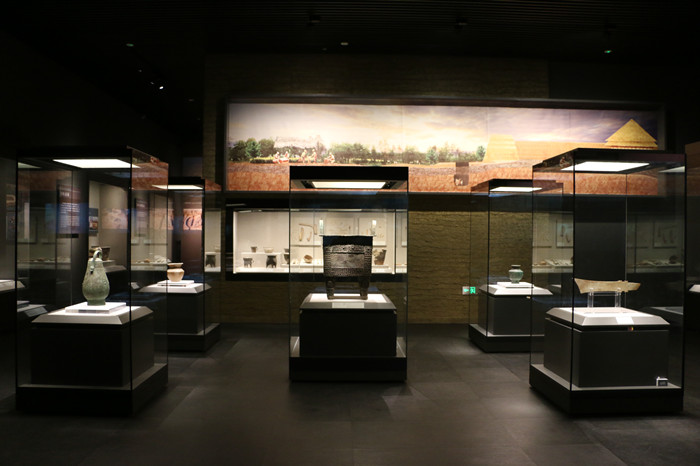
Gallery 2 scene
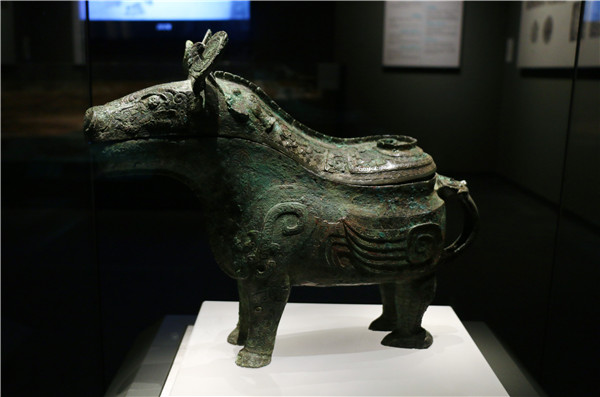
"Si Mu Xin" four feet gong

Oracle bone inscriptions of Shang Dynasty
Hall three, Harvard, China during the Western Zhou Dynasty (771 BC 1040s BC)
If the big dipper is in the center of the sky, the ancient rulers also believed that the king must build his capital in the sky and the earth, in order to meet the mandate of Heaven. Ancient records, since the beginning of the Xia Dynasty, the rulers have been "seeking the middle" practice. He zun-zhong's inscription "zhai-zi-china" is the best interpretation of the ancient people's practice of selecting the capital of China, and is also the earliest concept of "China" . In the early years of the Western Zhou Dynasty, the king and his ministers lived in the city of Luoyi, which was the ruling center alongside Haojing. The exquisite cultural relics unearthed from the tombs of the Western Zhou Dynasty in the northern kilns of Luoyang show the cultural features of the city of Chengzhou as the Western Zhou Dondo. Three generations of ritual system follow each other, both inheritance and creation. The artifacts in the tomb of the eldest son of Luyi, which have the strong cultural characteristics of the Shang Dynasty, represent the cultural inheritance of the Zhou Dynasty. The combination of cultural relics in the tombs of the nobility of the Guo state in Sanmenxia and the nobility of the ying state in Pingdingshan is the materialization of this ritual phenomenon, which embodies the cultural creation of the Zhou people, that brought the rituals of the early state to maturity.

Gallery 3 scene
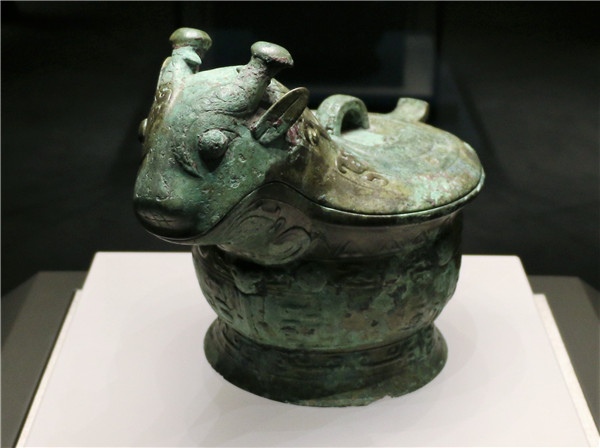
Cute "Changzikou" gui-shaped Gong
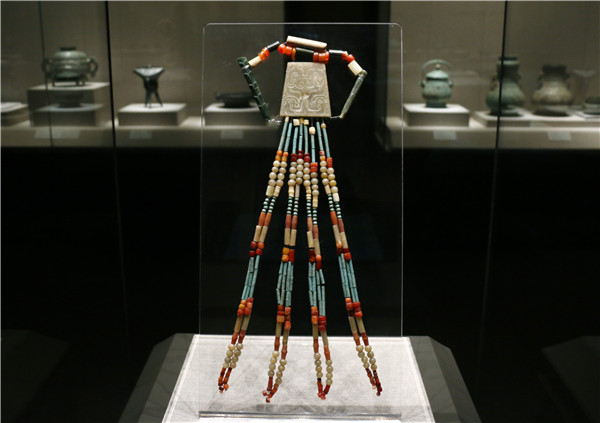
Yingguo jade pendant with excellent color matching
Hall 4, going to the central plains——The Eastern Zhou Dynasty (770-221 BC BC)
Zhou King Moved East, lost the position of the world communist, so the countries dispute, overlord frequent, all to the central plains for the target. Since Yu created the tripod as a symbol of Kyushu, it has become a symbol of state power. In the Eastern Zhou Dynasty, the different forms of the tripod were not only the embodiment of the Cultural pluralism, but also the symbol of the struggle for hegemony. In Henan Province, the styles of Central Plain and Chu, represented by the three Jin dynasties, had their own influence on the neighboring small countries, which was the reflection of the overall situation dominated by the struggle for hegemony between Jin and Chu in the Eastern Zhou Dynasty. Because Chu has occupied the Nanyang Basin, the summer road passageway, build pass, build the Great Wall, according to the square city solid, the risk of Han River, become the psychological support of the grand ambition since Zhuang Wang won the central plains. Under this background, the various schools of thought argued and the Yuan Code was created, and the age of Chinese cultural axis came into being.

Gallery 4 scene

The nine tripods of different forms of the vassal states

Stone Chime of Chu
Hall 5, the Empire: Foshan, from the Qin, Han, Wei, Jin, northern and southern dynasties (AD 581221 BC)
3rd Century BC, after the unification of the six states, the implementation of the county system, then 36 counties, Henan Alone 7, Central Plain became the auxiliary pil of the Qin Empire. Mount Dangshan in Yongcheng was not only the birthplace of Emperor Gaozu of Han Xinghan, but also the seat of the important vassal state of Liang in the Western Han Dynasty. 202 BC Emperor Gaozu of Han initially named Peng Yue King of Liang, after the Han Emperor's brother Liu Wu, Prince of Liang was awarded here, as Liu Wu, Prince of Liang. The frescoes of four gods and clouds and jade clothes unearthed in the mausoleum of Liang Wangling at Mangdang Mountain, Yongcheng, all reflect the vigorous strength of Liang in the Western Han Dynasty. After Liu Xiu established the Eastern Han Dynasty, he established the capital of Luoyang, and later the capital of Cao Wei, western Jin and northern Wei. Luoyang City in the Han and Wei dynasties rose and fell several times, but it has always been the core of the country, in the prosperity of Han culture and different national culture plays an important role in the integration. At the end of the Eastern Han Dynasty, Emperor Xian of Han moved his capital to Xu (now Xuchang) . During the three kingdoms period, the Wei ruled Central Plain and Xuchang was one of the five capitals of the Wei Dynasty. Nanyang was the hometown of Liu Xiu, Emperor Guangwu, and later became the southern capital. Luoyang, Nanyang and Xuchang, as the imperial capital and imperial homeland, witnessed the vicissitudes of the Han and Wei dynasties.
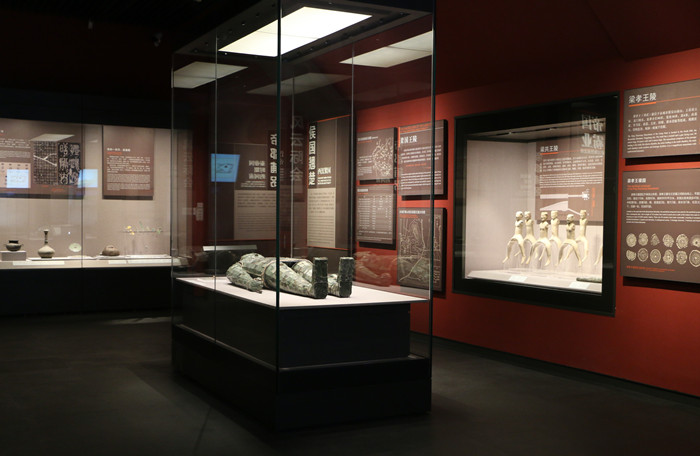
Gallery 5 scene

Frescoes of clouds of four gods
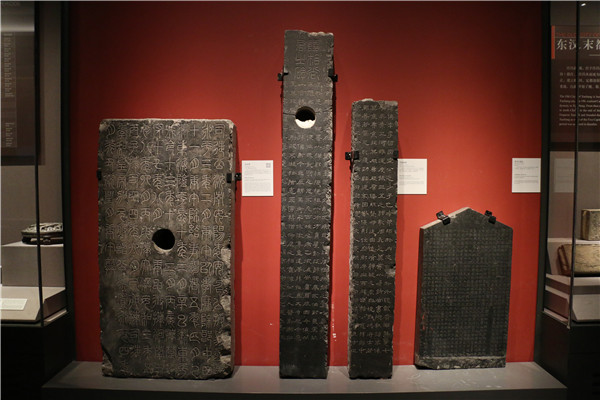
A group of Calligraphic Steles
Hall 6, the Empire: Foshan, from the Qin, Han, Wei, Jin, northern and southern dynasties (AD 581221 BC)
During the Qin and Han dynasties, the country was unified and strong. The extensive use of iron tools promoted the progress of agriculture and the development of manorial economy. The various pottery figurines and architectural objects of the Han dynasty reflected the rich and colorful manorial culture. The Han Dynasty farm in Sanyang village reproduces the life of the Han Dynasty peasants living on the banks of the Yellow River. With the rapid development of handicraft industry and Science and technology, many world-leading scientific and technological achievements have emerged, such as iron smelting, paper making, textile, porcelain making, medicine, astronomy and so on. With the opening of the Silk Road, the economic and cultural exchanges between China and the rest of the world have been strengthened, and the Central Plain region has become the center of world commerce and Trade. In the period of Wei, Jin and the southern and northern dynasties, the society was divided for a long time, and the amalgamation of various nationalities reached an unprecedented depth and breadth in frequent wars and migrations. Many Northern Wei Dynasty epitaphs unearthed in Luoyang reflect the fact that Emperor Xiaowen moved to the south, and reveal the evolution of foreign exchange and national fusion since the formation of the Han Empire.

Gallery 6 scene

Pottery figurines and dogs of the Han Dynasty 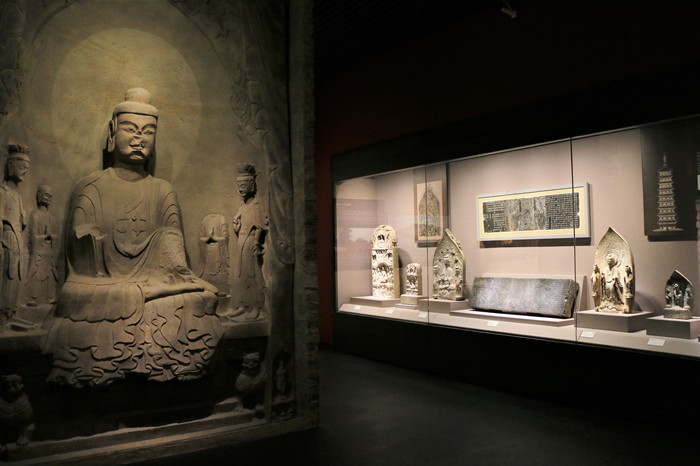
Stone Buddha
Hall 7, Golden Age: Foshan in the Tang Dynasty (AD 581 ~ 907)
The Sui Dynasty unified the north and south, the social prosperity, laid the foundation of the Tang Dynasty prosperity. The Tomb of Zhangsheng in Anyang contains a wealth of cultural relics, covering every aspect of daily life and recreating scenes from the lives of aristocratic bureaucrats in the Sui Dynasty. As the east capital of the Sui and Tang dynasties, Luoyang was of great strategic importance. It is not only the central hub of the Grand Canal, but also the junction of the sea and Land Silk Road, convenient land and water transportation, making the convergence of the four directions, commerce and trade economy is very prosperous. Wu Zetian did more business in Luoyang, making Luoyang an international metropolis, above Chang'an, another political, military, economic and cultural center in the Sui and Tang dynasties. Wu Zetian and other Wu Zetian related relics reveal the close relationship between the Queen and the sacred city of Luoyang. The prosperity of the Silk Road led to the integration of the cultures of various nationalities. The Western currency, patterns, costumes, musical instruments, music and dance theories, spices, religion and other foreign cultures added a strong foreign cultural color to the lives of the people in the Sui and Tang dynasties.

Gallery 7 scene
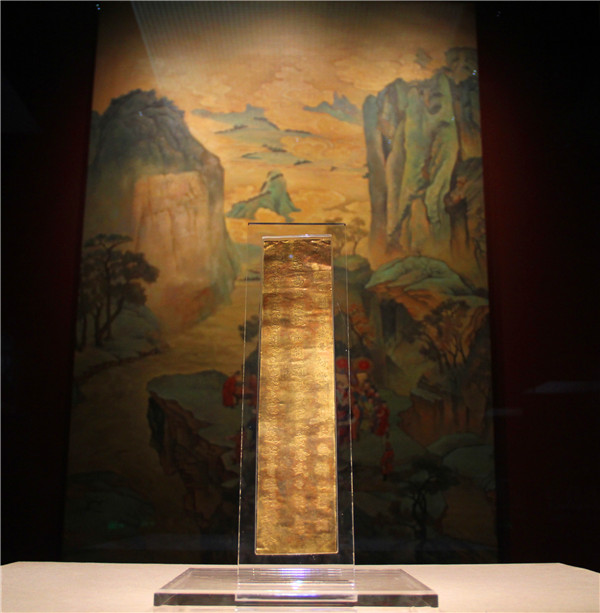
Wu Zetian, exonerated, Kim
Hall 8, Golden Age: Foshan in the Tang Dynasty (AD 581 ~ 907)
Tang dynasty economic prosperity, political openness, social prosperity, cultural life colorful. The numerous works of art created by the people of the Tang Dynasty embody the inclusive and open spirit of the age, and embody the social features and humanistic spirit of the Sui and Tang dynasties. The magnificent tri-colored wares made in Huangye kiln in Gongyi are the representative objects of the Tang Dynasty, which embody the magnificence of the material culture. The multi-colored glazed porcelain made in such kilns as Xiangzhou kiln, Dengfeng kiln, Duandian kiln and Hebi Kiln laid the foundation for the peak of the Song Dynasty Porcelain Industry. A large number of figures of civil servants, warriors and ladies in the Tang Dynasty truly reflect the elegant life of the Tang Dynasty. Different materials of tea sets, so that we see the prevalence of tea culture in the Tang Dynasty. The culture and art of the Sui and Tang dynasties not only inherited the tradition of the Han and Wei dynasties, but also accepted the artistic styles of various nationalities and foreign religions. Henan is the center of Taoism and Buddhism during the Sui and Tang dynasties, which has a large number of relics such as stupas, stone tablets, stone carvings and so on.
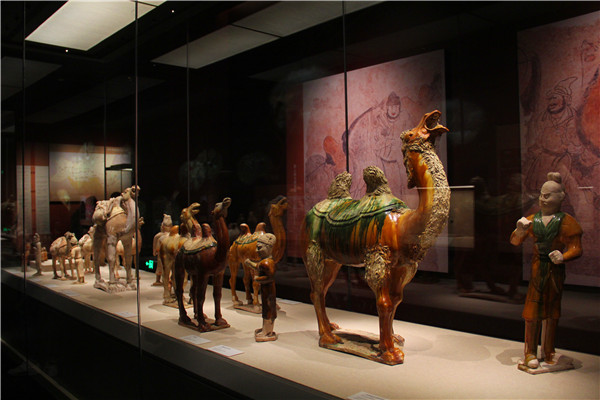
Three-colored camels and their figurines on the Silk Road

Elegant female figurines of Tang Dynasty
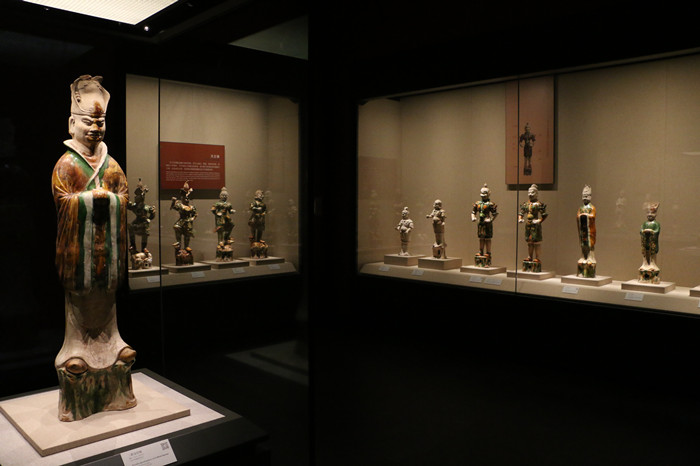
Military Attache Sancai and the civil servants
Hall 9, Menghua, Tokyo, during the song, Jin, and Yuan Dynasties (960-1368)
"The culture of the Chinese nation, after a thousand years of evolution, created in the world of Zhao and song, " the Northern Song Dynasty Dongjing City, more than a thousand years ago, the international metropolis, its developed water system connected to the inland river navigation, direct access to the port, to the vast sea route of Silk Road. The Along the River During the Qingming Festival shows the bustling scene in Tokyo, where people live in leisure, material wealth and Commodity. Under the policy of emphasizing culture over martial arts, the social culture and education flourished in the Northern Song Dynasty, especially the development of imperial examinations and academies. Neo-confucianism, promoted by scholar-officials, became an important thought in the song, Jin and yuan dynasties and later dynasties. The commercial prosperity promoted the development of the secular culture. The Zaju in the song, Jin and yuan dynasties applied the traditional poetry, song, dance, music and technique to the stage to depict the common people and express the local customs. Numerous figurines of carved bricks in Zaju opera show the new sound of music and opera at this time.
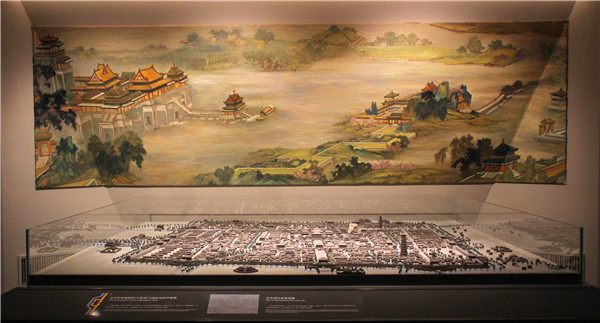
The bustling city of Tokyo
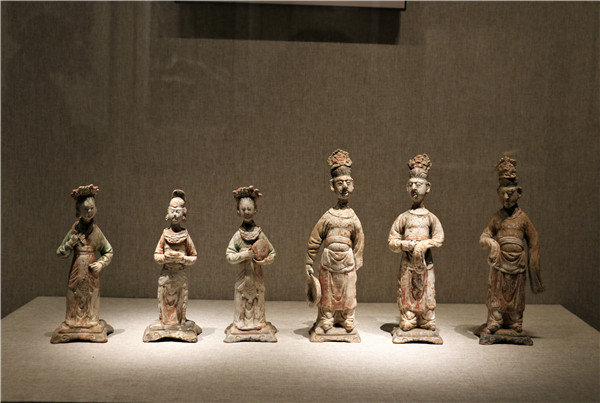
Lifelike terracotta figures
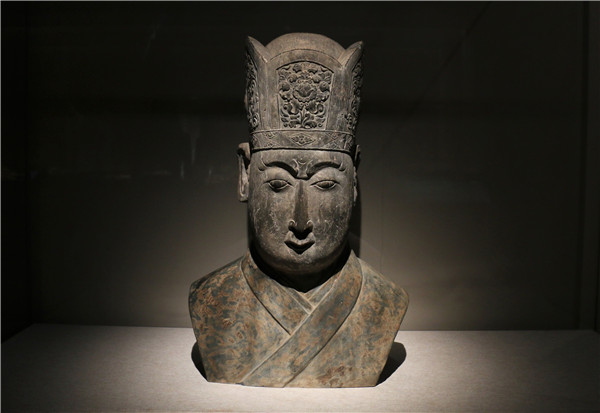
Handsome carved stone head
Hall 10, Menghua, Tokyo, during the song, Jin, and Yuan Dynasties (960-1368)
The song, Jin and Yuan Dynasties were the golden period in the history of Chinese ceramics. The official kilns in Central Plain flourished, represented by ru porcelain, Jun Porcelain and Zhang Gong Xiang Porcelain. There are many folk kilns, such as ru kilns, Hebi Kilns and dangyangyu kilns, which produce a rich variety of porcelain wares. The white and black flowers, printing, picking, carving and carving techniques coexist, and tend to be diversified in aesthetic appreciation, the ceramic industry in this period was colorful, colorful scene.

Porcelain pillow with different shapes
 CERULEAN glaze goose neck vase with carved design
CERULEAN glaze goose neck vase with carved design
Tail Room
The Chinese ancestors founded their country in China and created civilization by relying on the Mount Song River and the Yellow River. Central Plain is the political, military, economic and cultural center of China's ancient history, and has a strong influence on the surrounding areas From Primitive Society to the song, yuan, ming and Qing dynasties, the history of Central Plain has lasted without a break. The history of Central Plain is a microcosm of Chinese history, it has achieved its own sublimation, and Central Plain culture has absorbed foreign cultural achievements and continuously transformed itself into its own cultural characteristics with new vitality and vitality.
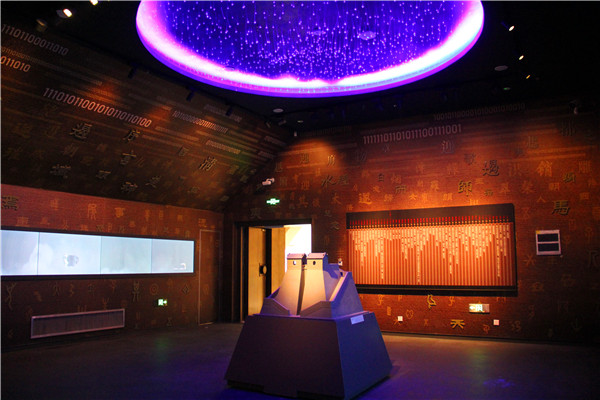
Editor:Yangcong
Recommended Content
-

"Writing and Inheritance —— An exhibition of calligraphy and painting works of the National Cultural System for 70 years" opens at the Henan Museum
2020-12-15 10:54 -

"The story of the Yellow River —— An Invitational Exhibition of China's Golden Stone Works" opens at the Henan Museum
2020-12-15 13:51 -

Henan province in Ming and Qing dynasties
2020-12-18 11:19
News
-
Henan province in Ming and Qing dynasties
-
Great China, the choice of the capital
-
Henan Museum to participate in "Museum Education Training in Central Plain" in Shandong
-
List of research projects funded by the Henan Museum in 2018
-
List of projects supported by the Henan Museum in 2019
-
List of projects supported by the Henan Museum in 2020
-
Henan Museum and young people read China manual together
-
The Henan Museum will hold a Youth Salon under the theme of "uniting the strength of youth, serving the development of culture and museums"
-
Henan Museum expert talks with Youth About Shang Zhou Bronze Weapons
-
Ma Xiaolin, dean of the Henan Museum, gave a presentation to teachers and students at 30 universities


